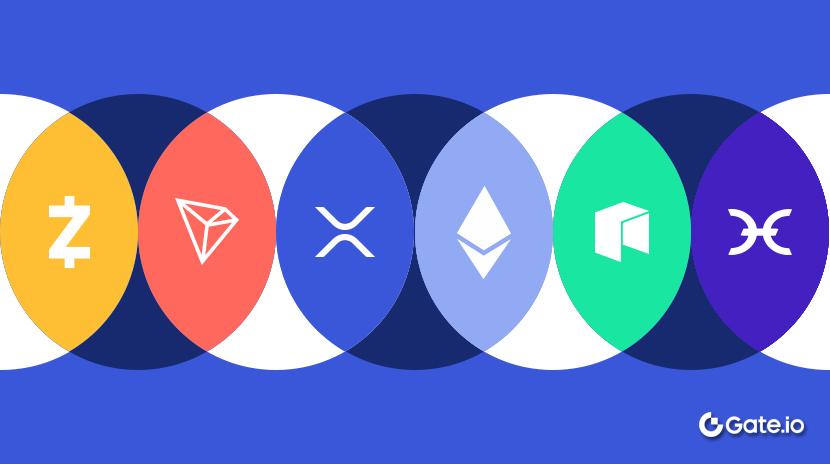本日の特集 |4 時間で 94% のクラッシュ: 盲目的な信仰から残酷な崩壊まで - OM のシュールなポンプ アンド ダンプ プレイブックの正体を暴く
カマがスーツを着ると、小売りの涙が最高の潤滑剤になります。

2025年4月14日の未明、暗号世界はSquid Gameよりも血みどろのドラマを繰り広げました。OM—MANTRAチェーンのトークンであり、リアルワールドアセット(RWA)ナラティブの旗艦—はわずか90分で55億ドルの“信仰ワイプアウト”を実行しました。4時間以内に、OMの価格は6.15ドルから0.37ドルという低水準にまで急落し、驚異的な94%の下落を記録しました。上海タワーを崖から黄浦江に投げ落とすと想像してみてください—そしてその途中で立ち見の人々にレバレッジ取引のヒントを配りながら。

その後、プロジェクトチームは何気なく声明を出しました:
「皆さん、その清算はすべて取引所のせいです〜私たちのトークンは完全にロックされました、わかりました〜」

Coinglassによると、12時間以内にOMのロングポジションで$47.78百万、ショートで$18.01百万が清算されました。
さらに不思議なのは何でしょうか?小売投資家がICUで生き残りをかけて戦っている間、OMは「ゾンビバウンス」を成功させ、0.37ドルから1.20ドルに急騰し、さらにショートポジションの新たな波を精算しています。わずか4時間で6000万ドル以上の取引が一掃されました。
この教科書レベルのラグプルの背後には、ユニークな「中国風」の抽出モデルがあります。これはPUAレベルの説得力、トークノミクスのトリック、規制上の抜け穴が組み合わさったものです。今日は、このビッグ・ショートの暗号通貨版を顕微鏡の下で解剖し、小売投資家が「自己犠牲的な感情の燃料」に仕立て上げられる様子を見てみましょう。
第1章:フォーアクト・ラグ・プル―カルトの創造から標的爆破へ
1.1 ギルデッド エイジ: アルマーニでシットコインを身につける
OMのオープニングアクトは、まるでウォール街の狼のブロックチェーンバージョンから直接来たようでした。チームは三重奏の物語を煽りました:「RWA +中東の大富豪+完全な規制順守」。その提案は?MAGと提携してイスラム金融原則に基づいてドバイの高級不動産をトークン化することです。
それは、油っぽい路上のパンケーキにミシュラン星をつけるようなものでした。突然、石油ドルや機関資金が殺到しました。

しかし、チェーンを見ると、異なる物語が語られました:TVLはわずか数百万ドルであり、それに対して全額稀釈価値はなんと100億ドルに達しました。これは、郡レベルのタピオカティーショップの日々の売り上げを使って、スターバックスの時価総額を正当化しようとするのと同じです。
この「PPTパワード航空母艦」ロジックは示しています:暗号通貨では、想像力が究極の生産力です。
1.2 マーケットコントロールの技術: クジラたちがゲームをプレイした方法
実際のトリックはトークノミクスにありました。オンチェーンアナリスト@nihaovand3つの主要なコントロールレバーを明らかにしました:
ステーキングロックアップPUA:リテールが自ら手錠をかけることを喜んで20%のAPYを提供。鉱夫たちさえ売らなかった─新たな資本論の章に値する不条理。
デフレーションの錯覚:すべての取引でOMトークンが燃やされ、実際の流通供給量は8,800万トークンに圧縮された幻想を生み出しました。
Witch Hunt Airdrops: 10億OMを持つ偽のウォレットを作成して需要をシミュレートする-基本的には、ブロックチェーン形式のトゥルーマンショー。
結果は?OMの価格チャートはただクジラのひもの上のパペットでした。2024年の440倍の価格急騰は奇跡ではなく、それはパフォーマンスアートでした:トークンの90%がコントロールされ、残りの10%の小売業者が追いかけるためにポンプされました。
1.3 ナラティブ・コントロール:デゲンスのストックホルム症候群
クラッシュ前夜、OMのコミュニティは完全なMLMセミナーでした。シルは「OMは中国の建設業者の誇りです!」と叫び、「今日は$2、来週は$10!」と言っていました。
チームは、人間の本性を操る方法を正確に知っていました。
感情的な恐喝:「全体像」や「シェイクアウト」などの暗号用語を使用して、エコーチェンバーを構築します。
テクニカル・スモーク・スクリーン:RSIは数週間にわたって買われすぎの領域にとどまっていましたが、価格は修正されることを拒否し、独立性の幻想を作り出しました。
規制クラウトベイティング:すべてのポンプは、ビットコインETFニュースや「機関投資家のオーバーフロー」に関連付けられ、小売業をパブロフ反射に訓練していました。
この環境では、どんな懐疑論も「低い確信」とラベル付けされました。トレーダーが戦争の芸術を引用してKラインを説明し始めると、清算は遠くない瞬間です。
1.4 The Death Waltz: Blood-Red at 2 A.M.
アジア時間の午前2時に攻撃することは、クジラたちが人間の行動を完璧に理解していることを示しています。
流動性の空白:米国の機関投資家は眠っていた、アジアの小売業者はオフラインであり、取引所のリスク管理は基本的に不在でした。
レバレッジマサカー:97%の清算がロングポジションでした-クジラたちが小売業者が「ディップ」を購入することを知っていたことの証拠
完璧なアリバイ:クラッシュ後、チームはそれをすべて取引所の清算のせいにしたが、OKXとバイナンスへの大規模な事前ダンプ転送を無視しました。
究極の天才?小売業者自身のお金を使って自分のポジションを清算する。あなたが2時にチャートを見つめながら底を夢見ている間、クジラたちはあなたの証拠金を使って彼らのヨットを燃やしていました。
第2章:スモーキングガン―チェーン上のデータが偽ることはない
2.1 ウォレットは話しませんが、データは叫びます
オンチェーンの探偵たちは、ラグプルの明確なマップを組み立てました:
レーザーデジタル:この投資ファームはクラッシュの直前に、1.7 百万 OM(11.49 百万ドル相当)をバイナンスに送金しました。
謎のクジラ:ウォレット0x9a…1a28が1か月前にバイナンスからOMで4000万ドルを引き出し、その後クラッシュの前夜に2000万ドルを売り払いました。
ステーキングプールの異常:StakedOM契約で突然の5.84百万ドルの引き出しを目撃し、崩壊と正確なタイミングでした。
これらの連携した動きは、ハウス・オブ・カードのプロットよりも厳密に脚本化されています。プロジェクトチームが「トークンはまだロックされている」と主張するのは、泥棒が「お金を盗んでいない、ただまだポケットに入っているだけだ」と言っているのと同じです。
2.2 エアドロップトラップ:甘い言葉から毒へ
OMのエアドロップ戦略は、心理的操作の典型例であり、あなたが「エアドロップPUA三部作」と呼ぶかもしれません。
期待プレイ: ローンチ時に「20%がローンチ時に解除される」という初期のハイプが約束され、30万人のユーザーが無料のPRシルとなるよう誘惑されました。
ルールスイッチ:途中で条件が変更され、「10%一括支払い+ 3年間の線形ベスティング」となり、無料のエアドロップがデジタル契約に変わりました。
ウィッチハントの清掃:実際には、従わない初期ユーザーを一掃する口実として、「シビル攻撃」という名目でアカウントが凍結されました。
この3段階の戦術は見事に実行されました:希望をぶら下げ、彼らを規則に閉じ込め、そして排除する。あなたがまだ年間収益を計算している間に、チームはすでにあなたの痛みの限界を計算しています。
第3章:規制空白地帯の強欲の遊び場
3.1 取引所のあいまいな役割

Binanceの創設者CZは教科書的な逃避をしました。「CEXは上場するものを決定すべきではない; ユーザーは自分の投資に責任がある」と。しかし、ここに不都合な真実があります:
リキディティ・ブラックホール:OMのデイリートレーディングボリュームの80%は、プロジェクトがチームによってコントロールされていることを知りながら、バイナンスとOKXの両方で上場契約を結ぶ中で発生しています。
リスク管理の失敗:トップ50の市場時価総額にわずかに満たないトークンに500倍のレバレッジを提供することは、ギャンブラーにロケットランチャーを渡すようなものです。
共生的な利益:上場手数料+取引手数料=取引所が暗号カジノの手数料収穫女王になる。
この「昼は審判、夜は武器商人」というモデルは、暗号市場を常に勝つカジノであるラスベガスに変えてしまいます。
結論:究極の暗号パラドックス
OMのクラッシュはバグではなく、機能でした。ここでは、「すべてのオルトコインが最終的にゼロになる」という暗い森で、本当の暗号エトスは誰が一番速く走るかに賭けることではなく、次の真実を認識することです。
テクノロジーは無実だが、人間の本性は欠陥がある:RWAは革命的なアイデアだったが、欲がそれを収穫機に変えてしまった。
規制の空白 ≠ 自由:無制限の権力は常に腐敗します。規制されていない市場は常に詐欺を生み出します。
生存こそが真の勝利です:隣人がシットコインでリッチになったと聞いたときは、その背後には100の破産の静かな物語があることを覚えておいてください。
そして最後に、暗号通貨を生き残るための黄金のルール:他の人が貪欲になるときは恐れて、チームが話し始めたら逃げる。あなたの信念は結局はクジラの撤退の燃料にすぎないのだから。
免責事項:
この記事は[から転載されていますマーズビット]. 著作権は元の著者に属します[ローレンス、マーズファイナンス]. もし転載に異議がある場合は、お問い合わせください。Gate Learnチーム。関連手続きに従って、チームができるだけ早く対応します。
免責事項:この記事で表現されている意見や見解は、著者個人の見解を表しており、投資アドバイスを構成するものではありません。
その他の言語版の記事はGate Learnチームによって翻訳されます。翻訳された記事は、言及せずにコピー、配布、または盗用することはできません。Gate.
関連記事

ETHを賭ける方法は?


ソラナとは何ですか?

GateToken(GT)とは

Cotiとは? COTIについて知っておくべきことすべて


